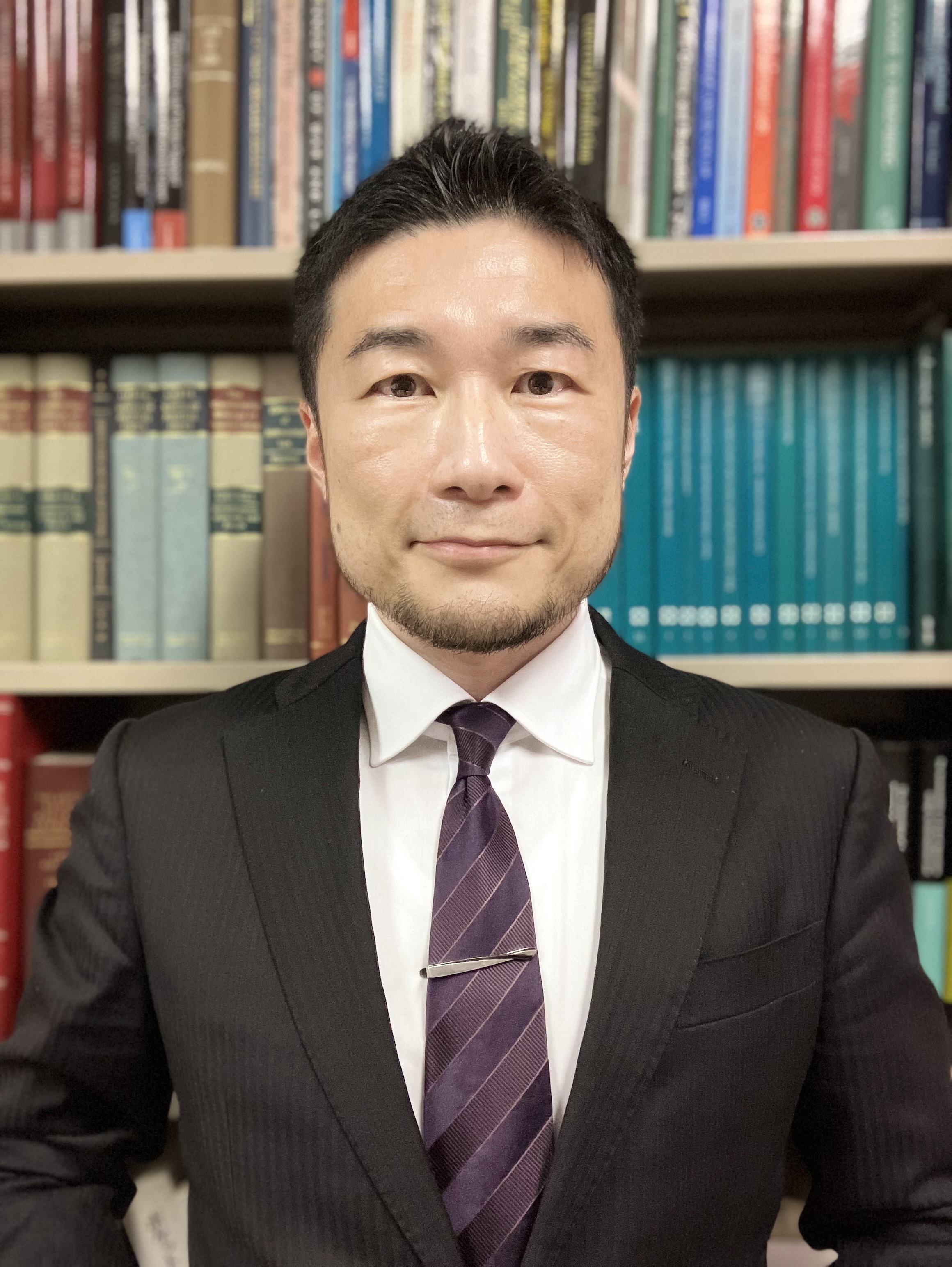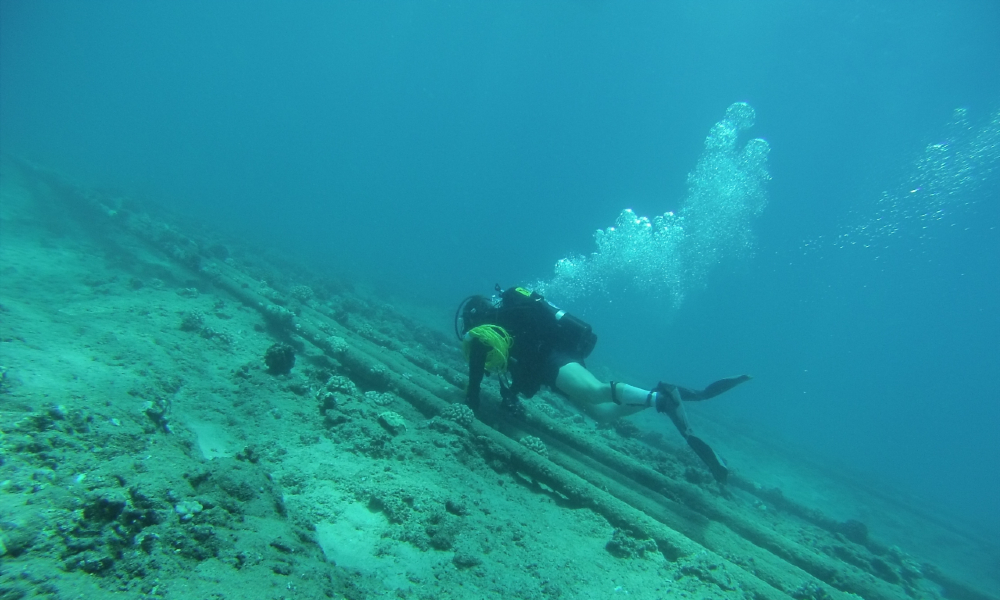Japan’s Evolving Position on the Use of Force in Collective Self-Defense
The Japanese Constitution was long understood as prohibiting the exercise of international law’s right of collective self-defense under all circumstances. Until just a few years ago, the government’s view had been that the Constitution’s war-renouncing clause, Article 9, permitted only the use of minimum necessary force to defend the territory and population of Japan—not other countries.

Published by The Lawfare Institute
in Cooperation With

The Japanese Constitution was long understood as prohibiting the exercise of international law’s right of collective self-defense under all circumstances. Until just a few years ago, the government’s view had been that the Constitution’s war-renouncing clause, Article 9, permitted only the use of minimum necessary force to defend the territory and population of Japan—not other countries. So for Japan to use force in collective self-defense (or even in instances authorized by the U.N. Security Council under Chapter VII of the U.N. Charter) would have been considered unconstitutional by the government because it would have exceeded this threshold. Japan could legally defend the population of a foreign state only if that population was in Japanese territory, such as American troops stationed in Japan (an issue I discussed on Lawfare as a matter of Japan’s individual self-defense with the United States).
This long-standing legal situation changed dramatically in 2014. Amid a lingering split in public opinion, Japan’s Cabinet decided to lift the ban on collective self-defense, particularly in a bid to “strengthen mutual cooperation with the United States.” This was not done by revising the Constitution—which has not been amended in its 72-year history—but, instead, by reinterpreting its principle of minimum necessary force, which continues to limit the scope of Japan’s permissible actions toward collective self-defense.
What is needed now is a proper international assessment of the limits and potential of Japan’s collective self-defense in light of today’s security environment to ensure that Japan’s legal status is meaningful at the practical and operational levels among allied and partner states.
Toward this end, I offer here a brief description of Japan’s approach to collective self-defense and argue that this approach is best suited to the maintenance of peace and security of global commons, notably the freedom of the high seas and cyberspace.
Armed Attack and Request for Assistance
As a starting point, Japan has repeatedly supported the International Court of Justice’s decision in Nicaragua v. United States. That 1986 case held that the declaration of an armed attack and request for assistance by an attacked state are necessary preconditions for collective self-defense—on top of the requirements for the right to individual self-defense. That view was contrary to the position of the United States, which had argued that “[c]ollective self-defense of a State must proceed with that [victim] State’s consent,” but not necessarily an explicit request.
Even if Japan met this international legal standard, however, three domestic legal requirements constrain Japan’s involvement in collective self-defense operations.
Existential-Crisis Situation
First, to qualify for collective self-defense, a situation must pose an existential crisis to Japan. Article 2 of the Armed Attack and Existential Crisis Situations Act, modified in 2015, defines the standard as: “an armed attack against a foreign state that is in a close relationship with Japan occurs, and, as a result, threatens Japan’s survival and poses a clear danger to overturn fundamentally its nationals’ right to life, liberty, and pursuit of happiness.” The foreign state is expected to be “a country which shares a common interest in responding to an armed attack from outside as a common danger and expresses intention to do so jointly with Japan.” This requirement is intended to ensure consistent reinterpretation of the Constitution with the “basic logic of the interpretation of Article 9”—or, that Japan’s use of force is constitutional solely when it is employed for the purpose of protecting its citizens’ right to live in peace.
Japanese government guidance further illustrates that an existential crisis could comprise “the situation in which a clear danger of the occurrence of armed attack [on Japan] is imminent” or “the tense situation in which armed attack [on Japan] is anticipated” (see Article 2(2) and (3) of the armed-attack law). Its examples include armed attack against U.S. vessels transporting Japanese nationals; armed attack against U.S. warships conducting ballistic missile surveillance in the vicinity of Japan; or armed attack against Guam, where the U.S. military bases critical for Japan’s security in East Asia are located. The legislation also allows for exceptional cases in which an attack is neither imminent nor anticipated but could still constitute an existential crisis. A blockade of the Strait of Hormuz, a critical energy lifeline to Japan, was one cited example.
Under the law, whether an existential crisis exists shall be determined “in an objective and reasonable manner” based on the comprehensive assessment of all information available by the Japanese Cabinet (a decision subject to prior or subsequent approval of the legislature, depending on circumstances)(Article 9(4)(6)(7) of the armed-attack law; Paragraph 2 of the Resolution Supplement to the Peace and Security Bills). Notably, this would not include a request to assist in anticipatory self-defense against an imminent threat of armed attack; Japan has rejected that doctrine as a matter of international law.
Minimum Necessary Force and Geographical Limitations
Even if an existential crisis exists, a second condition must be met for Japanese action: There must be no other appropriate means available to repel the armed attack on Japan’s ally, to ensure Japan’s survival, and/or to protect Japan’s people. This condition is less controversial than other requirements and has not been a source of substantive debate.
Third, Japan is constitutionally authorized to use force only to the minimum extent necessary for that purpose. This condition matters particularly in the context of geographical limitations on overseas deployment of Japan’s Self-Defense Force (SDF).
The government’s position has been that Japan’s use of force in any territory of another state exceeds the minimum-force restriction, even if that state consents. The government has emphasized that it maintains this stance while it adopts a new policy on collective self-defense.
Nevertheless, the government has suggested two possible exceptions to this limitation. The first is minesweeping in the Strait of Hormuz. The operation could be conducted in the sovereign territory of Oman or Iran, but according to Japan’s government, it would fall within the constitutionally permissible scope of minimum necessary force as an activity dedicated to securing safe navigation for vessels. Similarly, the government takes the view that a surgical missile strike on an enemy base overseas could be lawful if the alternative would be “boots on the ground.” However, the government has emphasized that this is a theoretical exception, because Japan lacks the capabilities, such as Suppression of Enemy Air Defenses and long-range missile systems, to carry out such an attack. Minesweeping by Japan’s SDF in the Strait of Hormuz is “the only exception” in practice.
Importantly, the third requirement—because of its link to the territorial sovereignty of other states—does not limit Japan’s use of force in collective self-defense in areas with no sovereign. This is just one of the ways that Japan’s legal framework for collective self-defense is most appropriate to the security of global commons, which befits its current security policy of proactively contributing to regional and global peace.
Japan’s Policy of “Proactive Contribution to Peace” and Global Commons
In its 2013 National Security Strategy, the Japanese government mapped a course toward a “proactive contribution to peace” revolving around the Japan-U.S. alliance. It resolves that “[i]n a world where globalization continues, Japan should play an even more proactive role as a major global player in the international community.” Lifting the ban on Japan’s engagement in collective self-defense is part of that strategy. Against a background of an ever-changing globalized security environment, a variety of threats to the international community are integrated into the threats to Japan’s survival. The “risks that can impede the utilization of and free access to the sea, outer space and cyberspace” are at its core.
A particularly notable potential threat is the growing risk of escalation in the South China Sea. A recent joint statement by Australia, Japan and the United States “voiced strong opposition to coercive unilateral actions” by China “that could alter the status quo and increase tensions” in the region. The United States and Australia are conducting operations or exercises to ensure freedom of navigation, possibly joined by the United Kingdom and France. Should an armed attack on those countries occur amid such a volatile situation, one could not rule out the possibility that it would rise to the level of an existential-crisis situation for Japan: the rule of law at sea and freedom of navigation are not merely vital global interests but also ones essential to Japan’s security. Such an attack could cause heightened alert in the East China Sea, particularly the Taiwan Strait—its peace and stability “is extremely important for the region and the world,” Japan noted in a 2017 bilateral summit with China—and Japan’s Senkaku Islands, which China also claims. Japan’s position on the use of force for collective defense stops short of addressing this possibility and instead strives for maintaining peaceful relations in these regions without threat. Nevertheless, the government retains the basic position that it must “make all necessary preparations in order to ensure Japan’s survival and protect its people” that involve the use of force in collective self-defense, at least on the high seas and in the airspace over them.
In contrast to issues involving outer space, which remains a largely uncharted domain for Japan’s use of force (with exception of its midcourse ballistic missile defense), the Japanese government more clearly envisions the use of force in collective self-defense in cyberspace. Not only has it made clear that “a cyberattack carried out as part of an armed attack” could constitute an armed attack itself and trigger an existential crisis, but it has said that other future cases against cyberattacks (including cyber-only armed attacks) need to be explored in collaboration with like-minded states. As part of this initiative, Japan proactively drives forward the collective cyber-defense strategy primarily with the United States, the Group of 7 and NATO (including NATO’s Cooperative Cyber Defence Center of Excellence). On the condition that the principle of sovereignty is not applicable to cyberspace—reasoning that has become controversial among experts but is crucial for Japan’s use of force given its geographical limitations under the Constitution—Japan’s view of collective cyber defense might become a promising option for its allied and partner states.
Conclusion
Japan’s approach to collective self-defense is not without limits. For example, Japan’s Constitution would never permit “boots on the ground” overseas for collective self-defense operations even with its allies and partner states. But there is still potential for Japan to contribute to the security of global commons, where the absence of a single sovereign necessitates collective responses to threats. Policymakers should focus on this aspect if they wish to advance defense cooperation with Japan.
The opinions expressed here are solely those of the author and do not necessarily represent the position of the Japanese government or the Ministry of Defense of Japan. The English translations of any Japanese texts are the author’s own except where a link to an English translation is provided.





